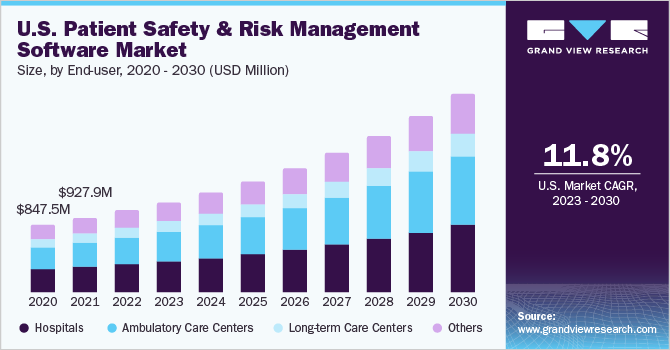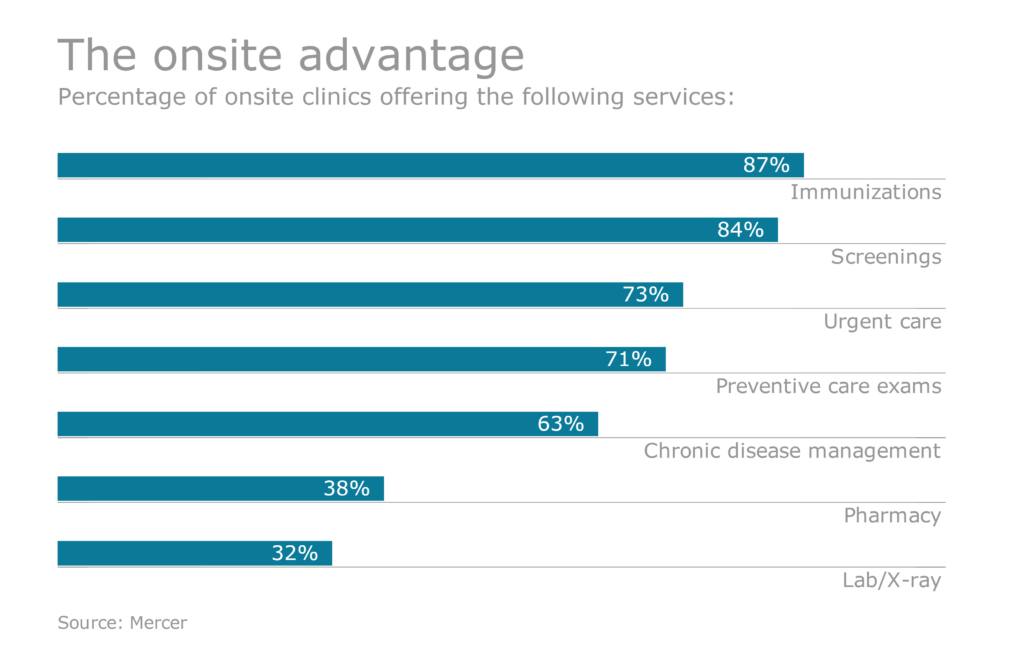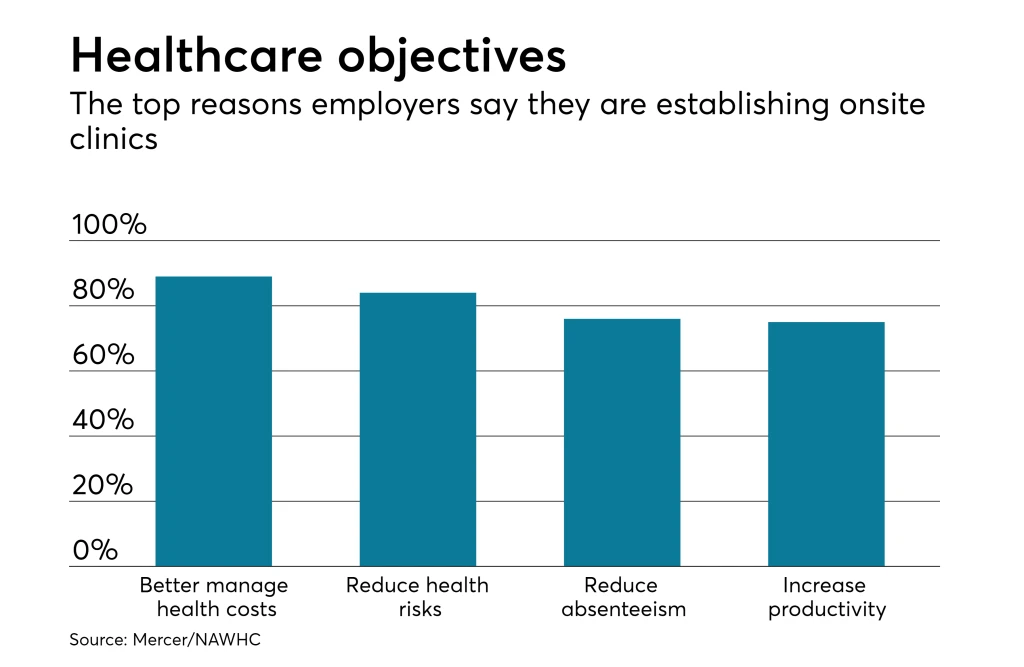Did you know that in 2022 alone, over 2.8 million non-fatal workplace injuries were reported in the U.S. alone?
In such instances, accessing prompt and qualified healthcare is crucial. Unfortunately, this can be a complex and time-consuming process, often delaying treatment and prolonging recovery.
That’s where onsite healthcare comes in, providing immediate access to medical professionals directly at the workplace. This not only enhances employee well-being but also boosts productivity and reduces absenteeism.
Let’s explore the benefits of onsite healthcare and how it can transform your workplace into a safer, healthier environment.
What is Onsite Healthcare?
Onsite healthcare brings medical services right to the workplace, offering immediate access to healthcare professionals without the hassle of leaving the job site.
For example, if you’re in the construction industry, where injuries and construction site safety are constant concerns, having onsite medics can be literally lifesaving. If a worker gets hurt, they can see a medical professional right away, ensuring they get the care they need quickly.
Modern onsite healthcare isn’t just about treating injuries. It also includes:
- Primary care
- Chronic condition management
- Wellness coaching
- Mental health support
- Physical therapy
For employers, this means investing in their team’s health directly and contributing to better safety in the workplace.
By making medical care easily accessible, you can also prevent minor issues from becoming major problems. This reduces absenteeism, boosts productivity, and cuts down on healthcare costs.

What Does Onsite Healthcare Involve?
Onsite healthcare encompasses a wide range of services designed to keep employees healthy, safe, and productive.
Here are some of the key components of onsite medical care:
- Onsite medical response and case management: This includes immediate onsite medical services for workplace injuries that help minimize the severity and recovery time. With ongoing case management, you ensure injured employees receive the best possible care and support throughout their recovery process.
- Onsite health screenings and tests: Regular health check-ups monitor key health indicators such as blood pressure, cholesterol, and glucose levels. This also includes drug and alcohol testing to maintain a safe and compliant workplace, along with flu shots and vaccinations to protect employees from seasonal illnesses.
- Wellness and safety training: Onsite healthcare provides employees with safety training on how they can prevent accidents and injuries. Wellness programs, including nutrition counseling, fitness coaching, and stress management, promote overall well-being. Additionally, mental health support offers access to counseling and resources for emotional and psychological health.
- Medical support and consultation: This covers primary care services such as routine check-ups, sick visits, and chronic condition management. Physical therapy services aid in the rehabilitation and recovery of injured employees. Onsite occupational health services focus on monitoring and managing health and safety risks specific to the workplace environment.

Main Benefits of Onsite Healthcare Model
Onsite healthcare offers numerous advantages that extend beyond simply providing medical care at the workplace.
Here are some key benefits of adopting this healthcare model:
1. Improved Access to Immediate Injury Care
This quick response of onsite medics can significantly reduce the severity of injuries, shorten recovery times, and prevent minor issues from becoming major health problems.
Think about it: having a healthcare professional available on-site can make all the difference between quickly treating a minor wound and dealing with a severe infection that requires extended medical leave.
2. Decreased Financial Burdens and Claim Cost
By providing immediate and comprehensive care, onsite healthcare helps lower overall healthcare costs. Employers can reduce the number of emergency room visits and workers’ compensation claims, leading to substantial savings.
According to studies, companies with onsite healthcare and wellness programs often see a return on investment, saving $1.50 or more for every dollar spent on the service.
3. Increased Employee Productivity and Satisfaction
With healthcare services readily available, employees are less likely to miss work due to health issues.
The reduced time spent away from work for medical appointments also leads to higher productivity. Additionally, employees feel more valued and supported, which boosts morale and job satisfaction and leads to better employee retention rates.
4. Streamlined Management and Compliance with Regulations
For employers, onsite healthcare means improved adherence to health and safety regulations, such as OSHA recordables.
Proactively managing health risks and providing regular health screenings can also protect you from potential fines and legal issues. Additionally, onsite health professionals can assist in documenting and managing injury cases, ensuring you meet all regulatory requirements.
5. Improved Workplace Safety and Injury Prevention
Preventive care and wellness programs offered through onsite healthcare can lead to a safer work environment. Workplace safety management systems and wellness initiatives help identify and mitigate potential safety hazards before they cause harm.
This proactive approach to adopting workplace safety regulations not only protects employees but also fosters a culture of safety within the organization.

How to Adopt Onsite Healthcare for Your Workforce?
Implementing an onsite healthcare model can be a game-changer for your organization, but to reap all the benefits, you should find the right provider that fits your specific needs.
Here are some key considerations to help you adopt onsite healthcare effectively:
1. Rely on Trained Onsite Healthcare Medics
Ensure that your onsite healthcare provider employs highly trained and certified medics. This guarantees that your employees will receive top-notch care from qualified personnel.
Also, some onsite healthcare providers are even backed by board-certified physicians, offering additional support and expertise.
2. Adopt Telemedicine-led Injury Response
One of the significant challenges in onsite healthcare is providing immediate and effective injury care.
Leveraging telemedicine for workplace injuries can bridge the gap between workers and expert physicians, ensuring rapid response and reducing the need to maintain a full-scale onsite occupational health clinic.
This model not only cuts down on costs but also simplifies the complexity of workplace injury management, providing a streamlined and efficient care process.
3. Partner with an OSHA-fluent Provider
Compliance with OSHA regulations ensures a safe and legal workplace.
That’s why choosing an onsite healthcare provider with a deep understanding of OSHA standards is crucial. Additionally, expertise in workers’ compensation risk management and workers’ compensation case management can provide added value, helping to manage claims effectively and minimize potential liabilities.
4. Pick a Provider with a Holistic Approach
The best onsite healthcare providers treat the whole worker, not just the injury. This means offering support for mental well-being and closely monitoring the employee’s recovery process. From the initial injury through to their return to work, a holistic approach fosters a healthier and more resilient workforce. It also protects the workers from the risk of being re-injured AFTER returning to work.
Ensuring trained medics, utilizing physician-led telemedicine, partnering with an OSHA-fluent provider, and adopting a holistic care approach are critical steps to success. JobSiteCare exemplifies these principles, offering innovative and comprehensive workplace injury solutions to meet your needs.
Conclusion
Onsite healthcare offers numerous benefits, from workplace injury response procedures to comprehensive wellness support, making it an invaluable asset for any organization. By adopting this healthcare model, you can enhance employee well-being, boost productivity, and reduce healthcare costs.
At JobSiteCare, we specialize in providing tailored onsite healthcare solutions that meet the unique needs of your workforce. Our commitment to providing holistic and expert healthcare anytime, anywhere ensures that your employees receive the highest quality care, both physically and mentally.
Contact us today to learn how we can help you create a safer, healthier, and more productive workplace.
Frequently Asked Questions
Here are some common questions and their answers to help you understand the value of onsite healthcare.
1. Is Onsite Healthcare Better Than Near-Site Clinics?
Onsite healthcare offers immediate access to medical services directly at the workplace, reducing the time employees spend away from their jobs. This can lead to quicker treatment and faster recovery times.
On the other hand, near-site clinics, while beneficial, do not provide the same level of immediacy and convenience as having healthcare services right at the worksite.
2. How Does Onsite Healthcare Lower Costs?
Onsite healthcare reduces the need for emergency room visits and minimizes workers’ compensation claims. Immediate treatment can prevent minor injuries from becoming major issues, saving money on extensive medical care.
Additionally, by keeping employees healthier and reducing absenteeism, you can see significant savings in overall healthcare expenditures.
3. How Can Onsite Health Assessments Improve Injury Prevention?
Onsite health assessments help identify potential health risks before they lead to injuries, allowing for preventive measures to be implemented.
This workplace injury prevention approach not only keeps employees healthier but also reduces the likelihood of accidents, creating a safer work environment.
4. How to Pick the Right Onsite Healthcare Provider for My Workforce?
Choosing the right onsite healthcare provider involves looking for a partner with extensive experience, certified medical professionals, and a comprehensive service offering.
It’s also crucial to ensure they have a strong understanding of OSHA standards and a holistic approach to onsite employee health, including mental well-being and continuous monitoring.
Additionally, you should assess their ability to integrate telemedicine and other innovative solutions to provide the best possible care for your workforce.


